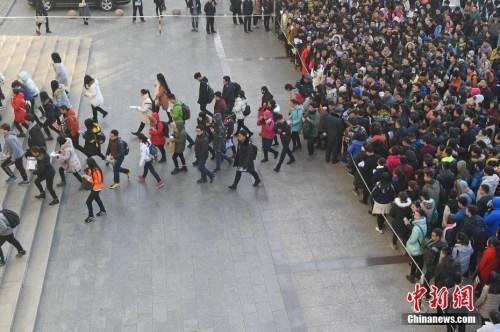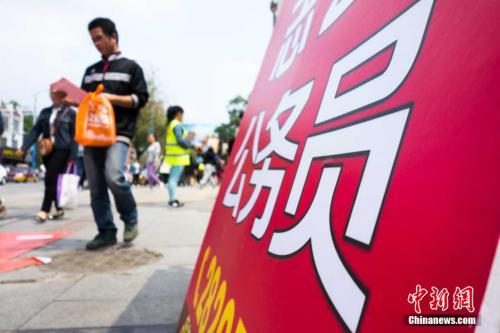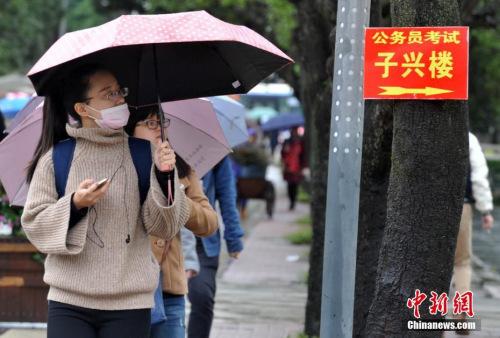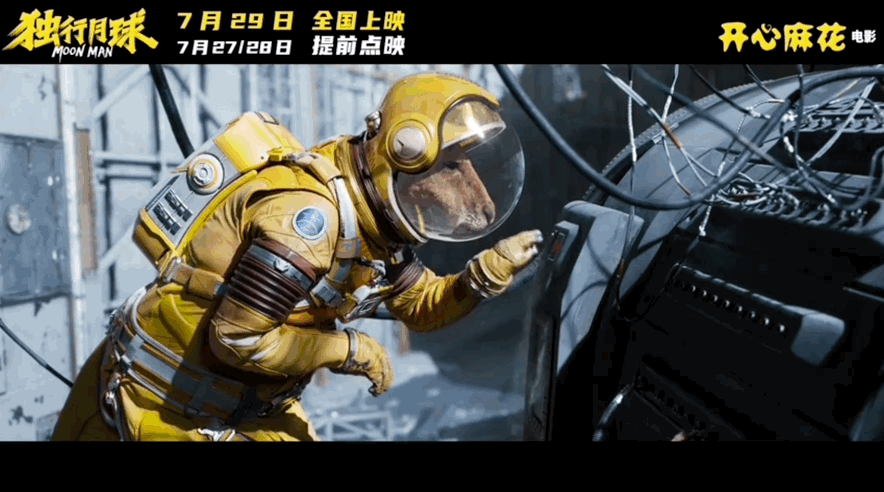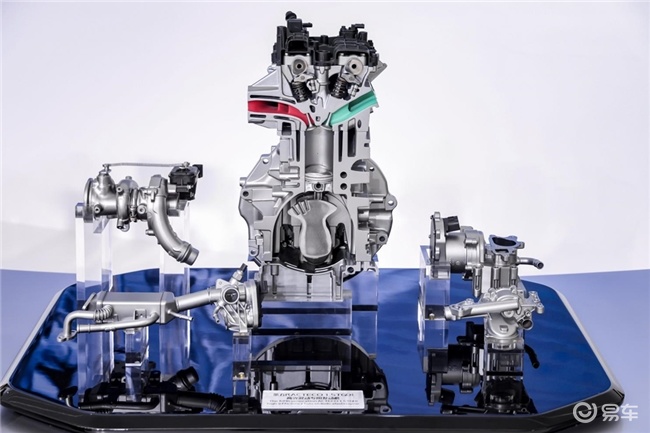Notice of the General Office of the State Council on Printing and Distributing the National Emergency Plan for Natural Disaster Relief
General Office of the State Council on Printing and Distributing
Notice of the National Emergency Plan for Natural Disaster Relief
Guo ban Han [2024] No.11
People’s governments of all provinces, autonomous regions and municipalities directly under the Central Government, ministries and commissions and institutions directly under the State Council:
With the consent of the State Council, the revised National Emergency Plan for Natural Disaster Relief is hereby issued to you, please conscientiously implement it according to the actual situation. The National Emergency Plan for Natural Disaster Relief (Guo Ban Han [2016] No.25) approved by the State Council on March 10, 2016 and issued by the General Office of the State Council shall be abolished at the same time.
the General Office of the State Council
January 20, 2024
National Emergency Plan for Natural Disaster Relief
1 General rules
1.1 Purpose of compilation
1.2 Compilation basis
1.3 Scope of application
1.4 working principles
2 Organization and command system
2.1 National Disaster Prevention, Mitigation and Relief Committee
2.2 Office of National Disaster Prevention, Mitigation and Relief Committee
2.3 Committee of Experts
3 Disaster relief preparation
4 disaster information report and release
4.1 Disaster information report
4.2 Disaster information release
5 national emergency response
5.1 first-level response
5.2 Secondary response
5.3 Three-level response
5.4 Four-level response
5.5 Adjustment of startup conditions
5.6 Response linkage
5.7 Response Termination
6 post-disaster relief
6.1 transitional life assistance
6.2 Restoration and reconstruction of damaged houses
6.3 winter and spring assistance
7 safeguard measures
7.1 Financial guarantee
7.2 Material support
7.3 Communication and information guarantee
7.4 Equipment and facilities support
7.5 Human resources protection
7.6 Social mobilization guarantee
7.7 Science and technology guarantee
7.8 Publicity and training
8 supplementary provisions
8.1 Interpretation of Terms
8.2 Responsibility and Reward and Punishment
8.3 Plan management
8.4 Reference situation
8.5 implementation time of the plan
1 General rules
1.1 Purpose of compilation
Guided by the Supreme Leader’s Socialism with Chinese characteristics Thought in the New Era, we will thoroughly implement the spirit of the important instructions of the Supreme Leader’s General Secretary on disaster prevention, mitigation and relief work, strengthen the centralized and unified leadership of the CPC Central Committee on disaster prevention, mitigation and relief work, establish and improve the natural disaster relief system and operation mechanism in accordance with the decision-making arrangements of the CPC Central Committee and the State Council, improve the level of legalization, standardization and modernization of disaster relief work, improve the ability of disaster prevention, mitigation and relief and disaster handling, minimize casualties and property losses, ensure the basic livelihood of the affected people, and maintain social stability in the affected areas.
1.2 Compilation basis
People’s Republic of China (PRC) Flood Control Law, People’s Republic of China (PRC) Earthquake Prevention and Disaster Mitigation Law, People’s Republic of China (PRC) Meteorological Law, People’s Republic of China (PRC) Forest Law, People’s Republic of China (PRC) Grassland Law, People’s Republic of China (PRC) Desert Prevention and Control Law, Red Cross Law of the People’s Republic of China, Regulations on Natural Disaster Relief, and relevant laws and regulations on overall emergency plan and emergency response.
1.3 Scope of application
This plan is applicable to disaster relief and other work carried out at the national level when serious natural disasters occur in China.
1.4 working principles
Adhere to the people first, life first, and effectively ensure the safety of people’s lives and property in the first place; Adhere to unified command, comprehensive coordination, graded responsibility and territorial management; Adhere to the leadership of the party Committee, the government’s responsibility, social participation, and self-help by the masses, and give full play to the role of grassroots mass autonomous organizations and public welfare social organizations; Adhere to safety first and prevention first, promote the integration of prevention, rescue and disaster relief, achieve efficient and orderly connection, and strengthen the management of the whole process of disaster prevention and rescue.
2 Organization and command system
2.1 National Disaster Prevention, Mitigation and Relief Committee
The National Disaster Prevention, Mitigation and Relief Committee thoroughly studies and implements the spirit of the important instructions of the Supreme Leader General Secretary on disaster prevention, mitigation and relief work, implements the relevant decision-making arrangements of the CPC Central Committee and the State Council, makes overall guidance, coordination and supervision of the national disaster prevention, mitigation and relief work, studies and considers the major policies, major plans, important systems and disaster prevention plans of the country, and is responsible for organizing the implementation and guiding the establishment of a natural disaster prevention and control system; Coordinate and promote the construction of laws and regulations on disaster prevention, mitigation and relief, coordinate and solve major problems in disaster prevention and relief, coordinate and carry out publicity, education and training on disaster prevention, mitigation and relief, and coordinate and carry out international exchanges and cooperation on disaster prevention, mitigation and relief; Complete other tasks assigned by the CPC Central Committee and the State Council.
The National Disaster Prevention, Mitigation and Relief Committee is responsible for coordinating and guiding the disaster relief work throughout the country and coordinating the rescue activities for major natural disasters. Member units of the National Committee for Disaster Prevention, Mitigation and Relief shall do a good job in disaster relief according to their respective responsibilities.
2.2 Office of National Disaster Prevention, Mitigation and Relief Committee
The Office of the National Disaster Prevention, Mitigation and Relief Committee is responsible for communication, policy coordination and information notification with relevant departments and localities, organizing disaster consultation and assessment, disaster relief and other work, and coordinating the implementation of relevant supporting policies and measures. Mainly includes:
(1) organize disaster consultation and approval, disaster trend judgment and disaster relief demand assessment;
(2) Coordinate and solve major problems in disaster relief, study and put forward support measures, and promote relevant member units to strengthen work communication with the affected areas;
(3) Dispatch the disaster situation and the progress of disaster relief work, uniformly release the disaster situation and the needs of the affected areas in accordance with relevant regulations, and inform all member units;
(4) to organize and guide the comprehensive assessment of the losses caused by major natural disasters, and urge the restoration and reconstruction of damaged houses;
(5) Follow up and urge the implementation of major decision-making arrangements for disaster relief, promote the effective implementation of important support measures, do a good job in the supervision and management of central disaster relief funds and materials, and improve the management system of disaster relief donations and materials.
2.3 Committee of Experts
The National Committee for Disaster Prevention, Mitigation and Relief has set up an expert committee to provide policy advice and suggestions on major decisions and important plans of national disaster prevention, mitigation and relief work, and to provide advice on disaster assessment, disaster relief and post-disaster recovery and reconstruction of major national natural disasters.
3 Disaster relief preparation
Meteorology, natural resources, water conservancy, agriculture and rural areas, oceans, forestry and grass, earthquakes and other departments timely report disaster warning and forecasting information to the office of the National Disaster Prevention and Mitigation Committee and the member units of the National Disaster Prevention and Mitigation Committee that perform disaster relief duties, and the natural resources departments provide geographic information data in a timely manner as needed. The Office of the National Committee for Disaster Prevention, Mitigation and Relief conducts a pre-assessment of possible disasters according to the disaster early warning and forecasting information, combined with the natural conditions, population and economic and social development of the areas that may be affected. When people’s lives and property may be threatened and their basic lives may be affected, and it is necessary to take countermeasures in advance, one or more of the following measures shall be taken as appropriate:
(1) to inform the disaster prevention and mitigation committees or emergency management departments of the provinces (autonomous regions and municipalities directly under the Central Government) that may be affected, and put forward the requirements for disaster relief preparations;
(2) Strengthen emergency watch, closely follow the change and development trend of disaster risk, dynamically evaluate the possible losses caused by disasters, and adjust relevant measures in time;
(3) Prepare disaster relief materials and allocate them in advance in case of emergency. Start the emergency linkage mechanism with transportation, railways, civil aviation and other departments and units, and prepare for the dispatch of relief materials;
(4) Send a working group in advance to learn about disaster risks on the spot and inspect and guide the preparations for disaster relief;
(5) According to the needs of the work, inform the member units of the National Disaster Prevention, Mitigation and Relief Committee about the preparations for disaster relief, and report the important information to the CPC Central Committee and the State Council in time;
(6) release early warning and related work to the society.
4 disaster information report and release
The emergency management departments at or above the county level shall, in accordance with the requirements of the Party Central Committee and the State Council on the information submission of sudden disasters, and the relevant provisions of the Statistical Investigation System of Natural Disasters and the Statistical Investigation System of Particularly Serious Natural Disasters, do a good job in the statistical submission, verification and evaluation of disaster information, consultation and approval, and information sharing among departments.
4.1 Disaster information report
4.1.1 Local emergency management departments at all levels should strictly implement the responsibility of disaster information reporting, improve the work system, standardize the work flow, ensure timely, accurate and comprehensive disaster information reporting, and resolutely put an end to late reporting, concealment, omission and false reporting of disaster information.
4.1.2 Local emergency management departments at all levels shall, after receiving the disaster incident report, report to the Party committee and government at the corresponding level and the superior emergency management department within the prescribed time limit. The relevant disaster-related departments of the people’s government at the county level shall promptly notify the emergency management department at the same level of the disaster situation in this industry. After receiving the report of serious natural disasters, the local emergency management departments at all levels should report to the Party committee and government at the same level and the superior emergency management department at the first time, and report to the emergency management department in time by telephone or the national emergency command integrated business system.
4.1.3 The disaster information summarized and reported through the national natural disaster disaster management system shall be submitted in accordance with the provisions of the Statistical Investigation System of Natural Disasters and the Statistical Investigation System of Particularly Serious Natural Disasters, and the first report shall be fast and the verification report shall be accurate. In case of special emergency (such as power failure, disconnection, network disconnection, etc.), it can be reported by satellite phone, fax, etc. first, and then it can be reported by the system in time.
4.1.4 After sudden disasters such as earthquakes, mountain torrents and geological disasters, if it is difficult to identify the information related to the dead and missing persons, the emergency management department in the affected areas should report the information at the first time according to the principle of "reporting first and then verifying it according to the identification results".
4.1.5 The emergency management departments in the disaster-stricken areas should establish the information comparison mechanism of the dead and missing persons due to the disaster, and actively communicate and coordinate with the departments of public security, natural resources, transportation, water conservancy, agriculture and rural areas, health and health; For disasters that cause heavy casualties, information comparison and inter-regional and inter-departmental consultations will be carried out in a timely manner. If the data between departments are inconsistent or qualitatively controversial, it shall jointly carry out investigation with relevant departments and issue an investigation report, which shall be reported to the Party committee and government at the corresponding level and copied to the emergency management department at the next higher level.
4.1.6 Before the serious natural disasters are stabilized, the relevant local emergency management departments at all levels shall implement the 24-hour zero reporting system and report it to the superior emergency management departments step by step. After the disaster situation is stable, the emergency management departments in the affected areas should promptly organize relevant departments and experts to carry out disaster verification, objectively and accurately verify all kinds of disaster losses, and timely organize reporting.
4.1.7 For drought disasters, local emergency management departments at all levels should report the disaster situation at the beginning of the drought and when people’s production and life are affected to some extent; In the process of drought development, the disaster situation should be reported at least once every 10 days until the disaster situation is lifted; After the disaster is relieved, report it in time.
4.1.8 The people’s governments at or above the county level shall establish and improve the disaster consultation system, and the disaster prevention, mitigation and relief committees or emergency management departments of the people’s governments at or above the county level shall timely organize relevant disaster-related departments to carry out disaster consultation, report disaster information, comprehensively and objectively evaluate and verify the disaster situation, and ensure that the disaster data of all departments are consistent. Disaster information such as disaster losses should be promptly notified to the relevant member units of the disaster prevention, mitigation and relief Committee at the corresponding level.
4.2 Disaster information release
The release of disaster information adheres to the principles of seeking truth from facts, timeliness, accuracy, openness and transparency. Release forms include authorized release, organization of reports, interviews with reporters, and holding press conferences. People’s governments in disaster-stricken areas should take the initiative to release information through emergency broadcasting, emergency early warning information release system, key news websites or government websites, Weibo, WeChat and clients. Radio and television administrative departments at all levels and relevant units should cooperate with emergency management departments to do a good job in early warning and forecasting, disaster and other information release.
Before the disaster is stabilized, the disaster prevention, mitigation and relief committee or emergency management department of the people’s government at or above the county level in the disaster-stricken area shall timely release to the society the casualties, property losses, and the dynamics, effectiveness and next steps of rescue work; After the disaster situation is stable, it should be timely evaluated, approved and released according to relevant regulations.
If there are other provisions in laws and regulations on the verification and release of disasters, those provisions shall prevail.
5 national emergency response
According to the degree of harm of natural disasters, the needs of disaster relief work and other factors, the national emergency response to natural disasters is divided into level one, level two, level three and level four. The first level of response is the highest.
5.1 first-level response
5.1.1 Starting conditions
(a) the occurrence of major natural disasters, a disaster process or through consultation and judgment may occur in one of the following circumstances, can start a response:
(1) A province (autonomous region or municipality directly under the Central Government) with more than 200 deaths and missing persons (including this number, the same below) can start the response, and its neighboring provinces (autonomous regions and municipalities directly under the Central Government) with more than 160 deaths and missing persons but less than 200 people can start the linkage;
(2) More than 2 million people in one province (autonomous region or municipality directly under the Central Government) need emergency resettlement and emergency living assistance;
(3) A province (autonomous region or municipality directly under the Central Government) collapsed and seriously damaged 300,000 houses or more than 100,000 houses;
(4) Drought disasters have caused difficulties in life such as lack of food or water, and the number of people who need government assistance accounts for more than 30% or more than 4 million of the agricultural and animal husbandry population in the province (autonomous regions and municipalities directly under the Central Government).
(two) other matters that the CPC Central Committee and the State Council think need to start the first-level response.
5.1.2 Start-up procedure
After the disaster, the Office of the National Disaster Prevention, Mitigation and Relief Committee, after analysis and evaluation, found that the disaster reached the starting conditions, and put forward suggestions for starting the first-level response to the National Disaster Prevention, Mitigation and Relief Committee, which reported to the CPC Central Committee and the State Council for decision. When necessary, the CPC Central Committee and the State Council directly decided to start the first-level response.
5.1.3 Response measures
The director of the National Disaster Prevention, Mitigation and Relief Committee organizes and coordinates disaster relief work at the national level, and guides and supports disaster relief work in the affected provinces (autonomous regions and municipalities directly under the Central Government). The National Disaster Prevention, Mitigation and Relief Committee and its member units shall take the following measures:
(1) discuss and judge the disaster situation and disaster relief situation, study and deploy disaster relief work, make decisions on major issues to guide and support disaster relief in the affected areas, and report relevant information to the CPC Central Committee and the State Council in a timely manner.
(2) send a working group composed of relevant departments to the disaster-stricken areas to guide disaster relief work, verify the disaster situation and express condolences to the affected people. According to the disaster situation and the needs of disaster relief work, the emergency management department can send an early working group to the disaster-stricken areas to guide the disaster relief work.
(3) Summarize the disaster situation. The Office of the National Disaster Prevention, Mitigation and Relief Committee timely grasps the dynamic information of the disaster situation and disaster relief work, uniformly releases the disaster situation in accordance with relevant regulations, and timely releases the needs of the affected areas. The relevant member units of the National Committee for Disaster Prevention, Mitigation and Relief shall share information on the disaster situation, the needs of the affected areas and the dynamics of disaster relief work, and report the relevant information to the Office of the National Committee for Disaster Prevention, Mitigation and Relief every day. When necessary, the expert committee of the National Disaster Prevention, Mitigation and Relief Committee shall organize experts to carry out the development trend of the disaster situation and the needs assessment of the affected areas.
(4) Allocate relief funds and materials. The Ministry of Finance, together with the Emergency Management Department, quickly launched the mechanism of rapid allocation of central disaster relief funds, and timely pre-allocated central natural disaster relief funds according to the preliminarily judged disaster situation. After the disaster situation is stable, the local application and emergency management department shall, in conjunction with relevant departments, carry out liquidation on the approved situation of the disaster situation and support the disaster relief work. The National Development and Reform Commission timely issued the investment in the central budget for post-disaster emergency recovery and reconstruction. The Emergency Management Department shall, jointly with the State Grain and Reserve Bureau, urgently allocate relief materials for central life, guide and supervise the implementation of emergency measures for disaster relief at the grass-roots level and the distribution of relief funds and materials. Transportation, railway, civil aviation and other departments and units coordinate and guide the work of disaster relief materials, personnel transportation and rapid repair of important passages, give full play to the role of logistics guarantee and smooth working mechanism, and ensure the smooth transportation of all kinds of disaster relief materials and timely transshipment of personnel.
(5) invest in disaster relief forces. The emergency management department quickly dispatched the national comprehensive fire rescue team and professional rescue team to put into disaster relief work, and actively helped the affected areas to transfer the affected people and deliver relief materials. The State-owned Assets Supervision and Administration Commission of the State Council urged the central enterprises to actively participate in emergency rescue, infrastructure repair and recovery, and fully support the disaster relief work. The Central Social Work Department gives overall guidance to relevant departments and units, and coordinates and organizes voluntary service forces to participate in disaster relief work. Relevant units of the armed forces shall, at the request of relevant state departments and local people’s governments, organize and coordinate the PLA, armed police forces and militia to participate in disaster relief and assist the people’s governments in disaster-stricken areas in disaster relief.
(6) Resettlement of the affected people. The Emergency Management Department shall, jointly with relevant departments, guide the affected areas to make overall arrangements for the affected people, strengthen the management services of centralized resettlement sites, and ensure the basic livelihood of the affected people. The National Health and Wellness Commission and the National Bureau for Disease Control and Prevention timely organized medical and health teams to go to the disaster-stricken areas to assist in health emergency work such as medical treatment, post-disaster epidemic prevention and psychological assistance.
(7) restore order in the affected areas. The Ministry of Public Security guides the strengthening of public security and road traffic emergency management in the disaster-stricken areas. The National Development and Reform Commission, the Ministry of Agriculture and Rural Affairs, the Ministry of Commerce, the General Administration of Market Supervision, the State Grain and Reserve Bureau and other relevant departments should do a good job in ensuring market supply and preventing price fluctuations. The Emergency Management Department, the National Development and Reform Commission, and the Ministry of Industry and Information Technology organize and coordinate the production and supply of relief materials and equipment, protection and disinfection supplies, medicines and medical devices. The General Administration of Financial Supervision shall guide the insurance claims and financial support services in the disaster-stricken areas.
(8) Repair the infrastructure. The Ministry of Housing and Urban-Rural Development guides the safety emergency assessment of post-disaster housing construction and municipal infrastructure projects. The Ministry of Water Resources guides the restoration of water conservancy and hydropower engineering facilities in the affected areas, the use and compensation of flood storage and detention areas, water supply in the water conservancy industry and emergency water supply in villages and towns. The National Energy Administration shall guide the restoration of hydropower projects and emergency protection of electric power within the scope of supervision.
(9) Provide technical support. The Ministry of Industry and Information Technology organizes emergency communication support in disaster-stricken areas. The Ministry of Natural Resources provides geographic information data of the disaster-stricken areas in time, organizes emergency mapping such as on-site image acquisition of the disaster-stricken areas, carries out disaster monitoring and spatial analysis, and provides emergency mapping support services. The Ministry of Ecology and Environment timely monitors the destruction, pollution and changes of the ecological environment caused by disasters, and carries out investigation and evaluation of the ecological environment in the affected areas.
(10) Start disaster relief donation. The Emergency Management Department, together with the Ministry of Civil Affairs, organizes nationwide disaster relief donation activities to guide social organizations with disaster relief purposes to strengthen the management, distribution and use of donated funds and materials; To handle international assistance from foreign governments and international organizations to our central government in conjunction with the Ministry of Foreign Affairs, the General Administration of Customs and other relevant departments and units. The Red Cross Society of China has carried out relevant disaster relief work in accordance with the law and carried out activities such as disaster relief fund-raising.
(11) Strengthen news propaganda. The Central Propaganda Department is responsible for news propaganda and public opinion guidance, guiding relevant departments and localities to establish a management mechanism for news release and media interview services, organizing news conferences in a timely manner, and coordinating and guiding media at all levels to do a good job in news propaganda. The Central Network Information Office, the State Administration of Radio, Film and Television, etc. organize news reports and public opinion guidance according to their duties.
(12) Carry out loss assessment. After the disaster is stabilized, according to the unified arrangements of the CPC Central Committee and the State Council on disaster assessment and recovery and reconstruction, the Emergency Management Department, together with relevant departments of the State Council, will guide the people’s governments of the affected provinces (autonomous regions and municipalities directly under the Central Government) to organize and carry out comprehensive disaster loss assessment, and uniformly release disaster losses according to relevant regulations.
(13) Other members of the National Committee for Disaster Prevention, Mitigation and Relief shall, in accordance with the division of responsibilities, do a good job in relevant work.
(14) The Office of the National Disaster Prevention, Mitigation and Relief Committee timely summarizes the disaster relief work carried out by various departments and reports to the CPC Central Committee and the State Council according to procedures.
5.2 Secondary response
5.2.1 Starting conditions
Major natural disasters occur, and one of the following circumstances may occur in the course of a disaster or after consultation and judgment, the secondary response can be initiated:
(1) A province (autonomous region or municipality directly under the Central Government) with more than 100 people dead and missing but less than 200 people (excluding this number, the same below) can start the response, and its neighboring provinces (autonomous regions and municipalities directly under the Central Government) with more than 80 people dead and missing but less than 100 people can start the linkage;
(2) One province (autonomous region or municipality directly under the Central Government) has more than 1 million people and less than 2 million people who need emergency living assistance;
(3) A province (autonomous region or municipality directly under the Central Government) collapsed and seriously damaged 200,000 or more houses, 300,000 or less than 100,000 houses;
(4) Drought disasters have caused difficulties in life such as lack of food or water, and the number of people who need government assistance accounts for more than 25% and less than 30% of the agricultural and animal husbandry population in the province (autonomous regions and municipalities directly under the Central Government) or more than 3 million and less than 4 million.
5.2.2 Start-up procedure
After the disaster, the Office of the National Disaster Prevention, Mitigation and Relief Committee, after analysis and evaluation, found that the disaster reached the starting conditions, put forward a proposal to start the secondary response to the National Disaster Prevention, Mitigation and Relief Committee, and the deputy director of the National Disaster Prevention, Mitigation and Relief Committee (the main responsible comrade of the Emergency Management Department) reported it to the director of the National Disaster Prevention, Mitigation and Relief Committee for decision.
5.2.3 Response measures
The deputy director of the National Disaster Prevention, Mitigation and Relief Committee (the main responsible comrade of the Emergency Management Department) organizes and coordinates the disaster relief work at the national level, and guides and supports the disaster relief work in the affected provinces (autonomous regions and municipalities directly under the Central Government). The National Disaster Prevention, Mitigation and Relief Committee and its member units shall take the following measures:
(1) discuss and judge the disaster situation and disaster relief situation, study and implement disaster relief support policies and measures, and report important information to the CPC Central Committee and the State Council in a timely manner.
(2) send a working group composed of relevant departments to the disaster-stricken areas to guide disaster relief work, verify the disaster situation and express condolences to the affected people.
(3) The Office of the National Disaster Prevention, Mitigation and Relief Committee timely grasps the dynamic information of the disaster situation and disaster relief work, uniformly releases the disaster situation in accordance with relevant regulations, and timely releases the needs of the affected areas. The relevant member units of the National Committee for Disaster Prevention, Mitigation and Relief shall share information on the disaster situation, the needs of the affected areas and the dynamics of disaster relief work, and report the relevant information to the Office of the National Committee for Disaster Prevention, Mitigation and Relief every day. When necessary, the expert committee of the National Committee for Disaster Prevention, Mitigation and Relief shall organize experts to carry out disaster development trends and needs assessment of the affected areas.
(4) The Ministry of Finance, together with the Emergency Management Department, quickly launched the mechanism of rapid allocation of central disaster relief funds, and timely pre-allocated central natural disaster relief funds according to the preliminarily judged disaster situation. After the disaster situation is stable, the local application and emergency management department shall, in conjunction with relevant departments, carry out liquidation on the approved situation of the disaster situation and support the disaster relief work. The National Development and Reform Commission timely issued the investment in the central budget for post-disaster emergency recovery and reconstruction. The Emergency Management Department shall, jointly with the State Grain and Reserve Bureau, urgently allocate relief materials for central life, guide and supervise the implementation of emergency measures for disaster relief at the grass-roots level and the distribution of relief funds and materials. Transportation, railway, civil aviation and other departments and units coordinate and guide the work of disaster relief materials, personnel transportation and rapid repair of important passages, give full play to the role of logistics guarantee and smooth working mechanism, and ensure the smooth transportation of all kinds of disaster relief materials and timely transshipment of personnel.
(5) The Emergency Management Department quickly dispatched the national comprehensive fire rescue team and professional rescue team to put into disaster relief work, and actively helped the affected areas to transfer the affected people and deliver and distribute relief materials. Relevant units of the armed forces shall, at the request of relevant state departments and local people’s governments, organize and coordinate the PLA, armed police forces and militia to participate in disaster relief and assist the people’s governments in disaster-stricken areas in disaster relief.
(6) The National Health and Wellness Commission and the National Bureau for Disease Control and Prevention shall, according to the needs, promptly send medical and health teams to the disaster-stricken areas to assist in health emergency work such as medical treatment, post-disaster epidemic prevention and psychological assistance. The Ministry of Natural Resources provides geographic information data of the disaster-stricken areas in time, organizes emergency mapping such as on-site image acquisition of the disaster-stricken areas, carries out disaster monitoring and spatial analysis, and provides emergency mapping support services. The State-owned Assets Supervision and Administration Commission of the State Council urged central enterprises to actively participate in emergency rescue, infrastructure repair and recovery. The General Administration of Financial Supervision shall guide the insurance claims and financial support services in the disaster-stricken areas.
(7) The Emergency Management Department and the Ministry of Civil Affairs shall guide the affected provinces (autonomous regions and municipalities directly under the Central Government) to carry out disaster relief donation activities. The Central Social Work Department gives overall guidance to relevant departments and units, and coordinates and organizes voluntary service forces to participate in disaster relief work. The Red Cross Society of China has carried out relevant disaster relief work in accordance with the law and carried out activities such as disaster relief fund-raising.
(8) The Central Propaganda Department is responsible for news propaganda and public opinion guidance as a whole, guiding relevant departments and localities to organize press conferences in a timely manner as appropriate, and coordinating and guiding media at all levels to do a good job in news propaganda. The Central Network Information Office, the State Administration of Radio, Film and Television, etc. organize news reports and public opinion guidance according to their duties.
(9) After the disaster situation is stable, the people’s governments of the affected provinces (autonomous regions and municipalities directly under the Central Government) shall organize a comprehensive assessment of disaster losses and submit the assessment results to the National Committee for Disaster Prevention, Mitigation and Relief in a timely manner. The Office of the National Disaster Prevention, Mitigation and Relief Committee organizes and approves and uniformly issues disaster losses according to relevant regulations.
(10) Other members of the National Committee for Disaster Prevention, Mitigation and Relief shall, in accordance with the division of responsibilities, do a good job in relevant work.
(11) The Office of the National Disaster Prevention, Mitigation and Relief Committee timely summarizes and reports the disaster relief work carried out by various departments.
5.3 Three-level response
5.3.1 Starting conditions
Major natural disasters occur, and one of the following circumstances may occur in the course of a disaster or after consultation and judgment, a three-level response can be initiated:
(1) A province (autonomous region or municipality directly under the Central Government) with more than 50 dead and missing persons and less than 100 people can start the response, and its neighboring provinces (autonomous regions and municipalities directly under the Central Government) with more than 40 dead and missing persons and less than 50 people can start the linkage;
(2) A province (autonomous region or municipality directly under the Central Government) has more than 500,000 people and less than 1 million people who need emergency living assistance;
(3) A province (autonomous region or municipality directly under the Central Government) collapses and seriously damages 100,000 or more than 30,000 houses, 200,000 or less than 70,000 houses;
(4) Drought disasters have caused difficulties in life such as lack of food or water, and the number of people who need government assistance accounts for more than 20% and less than 25% of the agricultural and animal husbandry population in the province (autonomous regions and municipalities directly under the Central Government) or more than 2 million and less than 3 million.
5.3.2 Startup procedure
After the disaster, the Office of the National Disaster Prevention, Mitigation and Relief Committee, after analysis and evaluation, determined that the disaster reached the starting conditions, put forward a proposal to start the three-level response to the National Disaster Prevention, Mitigation and Relief Committee, and the deputy director of the National Disaster Prevention, Mitigation and Relief Committee (the main responsible comrade of the Emergency Management Department) decided to start the three-level response and reported it to the director of the National Disaster Prevention, Mitigation and Relief Committee.
5.3.3 Response measures
The deputy director of the National Disaster Prevention, Mitigation and Relief Committee (the main responsible comrade of the Emergency Management Department) or the deputy director of the Office of the National Disaster Prevention, Mitigation and Relief Committee entrusted by him (the responsible comrade of the Emergency Management Department) organizes and coordinates the disaster relief work at the national level, and guides and supports the disaster relief work of the affected provinces (autonomous regions and municipalities directly under the Central Government). The National Disaster Prevention, Mitigation and Relief Committee and its member units shall take the following measures:
(1) The Office of the National Committee for Disaster Prevention, Mitigation and Relief organizes relevant member units and affected provinces (autonomous regions and municipalities directly under the Central Government) to analyze the disaster situation, study and implement disaster relief support policies and measures, and report relevant information to the director and deputy director of the National Committee for Disaster Prevention, Mitigation and Relief in a timely manner and notify relevant member units.
(2) send a working group composed of relevant departments to the disaster-stricken areas to guide disaster relief work, verify the disaster situation and express condolences to the affected people.
(3) The Office of the National Disaster Prevention, Mitigation and Relief Committee timely grasps and uniformly releases the dynamic information of disaster situation and relief work in accordance with relevant regulations.
(4) The Ministry of Finance, together with the Emergency Management Department, quickly launched the mechanism of rapid allocation of central disaster relief funds, and timely pre-allocated some central natural disaster relief funds according to the preliminarily judged disaster situation. After the disaster situation is stable, the local application and emergency management department shall, in conjunction with relevant departments, carry out liquidation on the approved situation of the disaster situation and support the disaster relief work. The National Development and Reform Commission timely issued the investment in the central budget for post-disaster emergency recovery and reconstruction. The Emergency Management Department shall, jointly with the State Grain and Reserve Bureau, urgently allocate relief materials for central life, guide and supervise the implementation of emergency measures for disaster relief at the grass-roots level and the distribution of relief funds and materials. Transportation, railway, civil aviation and other departments and units coordinate and guide the work of disaster relief materials, personnel transportation and rapid repair of important passages, give full play to the role of logistics guarantee and smooth working mechanism, and ensure the smooth transportation of all kinds of disaster relief materials and timely transshipment of personnel.
(5) The Emergency Management Department quickly dispatched the national comprehensive fire rescue team and professional rescue team to put into disaster relief work, and actively helped the affected areas to transfer the affected people and deliver and distribute relief materials. Relevant units of the armed forces shall, at the request of relevant state departments and local people’s governments, organize and coordinate the PLA, armed police forces and militia to participate in disaster relief and assist the people’s governments in disaster-stricken areas in disaster relief.
(6) The National Health and Wellness Commission and the National Bureau of Disease Control and Prevention guide the affected provinces (autonomous regions and municipalities directly under the Central Government) to do a good job in health emergency work such as medical treatment, post-disaster epidemic prevention and psychological assistance. The General Administration of Financial Supervision shall guide the insurance claims and financial support services in the disaster-stricken areas.
(7) The Central Social Work Department coordinates and guides relevant departments and units, and organizes voluntary service forces to participate in disaster relief. The Red Cross Society of China carries out relevant disaster relief work according to law. The affected provinces (autonomous regions and municipalities directly under the Central Government) organize disaster relief donation activities in a standardized and orderly manner according to needs.
(8) After the disaster situation is stable, the Emergency Management Department shall guide the affected provinces (autonomous regions and municipalities directly under the Central Government) to assess and verify the disaster losses.
(9) Other members of the National Committee for Disaster Prevention, Mitigation and Relief shall, in accordance with the division of responsibilities, do a good job in relevant work.
5.4 Four-level response
5.4.1 Starting conditions
Major natural disasters occur, and one of the following circumstances may occur in the course of a disaster or in consultation and judgment, and a four-level response can be initiated:
(1) A province (autonomous region or municipality directly under the Central Government) has more than 20 deaths and less than 50 missing persons;
(2) One province (autonomous region or municipality directly under the Central Government) has more than 100,000 people and less than 500,000 people who need emergency living assistance;
(3) A province (autonomous region or municipality directly under the Central Government) collapses and seriously damages 10,000 or more houses, and 100,000 or less houses;
(4) Drought disasters have caused difficulties in life such as lack of food or water, and the number of people who need government assistance accounts for more than 15% and less than 20% of the agricultural and animal husbandry population in the province (autonomous regions and municipalities directly under the Central Government) or more than 1 million and less than 2 million.
5.4.2 Start-up procedure
After the disaster, the Office of the National Disaster Prevention, Mitigation and Relief Committee, after analysis and evaluation, found that the disaster reached the starting conditions, and the deputy director of the Office of the National Disaster Prevention, Mitigation and Relief Committee (the responsible comrade of the emergency management department) decided to start the four-level response and reported it to the deputy director of the National Disaster Prevention, Mitigation and Relief Committee (the main responsible comrade of the emergency management department).
5.4.3 Response measures
The Office of the National Disaster Prevention, Mitigation and Relief Committee organizes and coordinates disaster relief work at the national level, and guides and supports disaster relief work in the affected provinces (autonomous regions and municipalities directly under the Central Government). The National Disaster Prevention, Mitigation and Relief Committee and its member units shall take the following measures:
(1) The Office of the National Disaster Prevention, Mitigation and Relief Committee organizes relevant departments and units to analyze the disaster situation, study and implement disaster relief support policies and measures, and report the relevant information to the director and deputy director of the National Disaster Prevention, Mitigation and Relief Committee in a timely manner and notify relevant member units.
(2) The Office of the National Disaster Prevention, Mitigation and Relief Committee sent a working group to the disaster-stricken areas to assist and guide local disaster relief work, verify the disaster situation and express condolences to the affected people. When necessary, a joint working group may be formed by the relevant departments.
(3) The Office of the National Disaster Prevention, Mitigation and Relief Committee timely grasps and uniformly releases the dynamic information of disaster situation and relief work in accordance with relevant regulations.
(4) The Ministry of Finance, together with the Emergency Management Department, quickly launched the mechanism of rapid allocation of central disaster relief funds, and timely pre-allocated some central natural disaster relief funds according to the preliminarily judged disaster situation. After the disaster situation is stable, the local application and emergency management department shall, in conjunction with relevant departments, carry out liquidation on the approved situation of the disaster situation and support the disaster relief work. The National Development and Reform Commission timely issued the investment in the central budget for post-disaster emergency recovery and reconstruction. The Emergency Management Department shall, jointly with the State Grain and Reserve Bureau, urgently allocate relief materials for central life, guide and supervise the implementation of emergency measures for disaster relief at the grass-roots level and the distribution of relief funds and materials. Transportation, railway, civil aviation and other departments and units coordinate and guide the work of disaster relief materials, personnel transportation and rapid repair of important passages, give full play to the role of logistics guarantee and smooth working mechanism, and ensure the smooth transportation of all kinds of disaster relief materials and timely transshipment of personnel.
(5) The Emergency Management Department quickly dispatched the national comprehensive fire rescue team and professional rescue team to put into disaster relief work, and actively helped the affected areas to transfer the affected people and deliver and distribute relief materials. Relevant units of the armed forces shall, at the request of relevant state departments and local people’s governments, organize and coordinate the PLA, armed police forces and militia to participate in disaster relief and assist the people’s governments in disaster-stricken areas in disaster relief.
(6) The National Health and Wellness Commission and the National Bureau of Disease Control and Prevention guide the affected provinces (autonomous regions and municipalities directly under the Central Government) to do a good job in health emergency work such as medical treatment, post-disaster epidemic prevention and psychological assistance.
(7) Other members of the National Committee for Disaster Prevention, Mitigation and Relief shall, in accordance with the division of responsibilities, do a good job in relevant work.
5.5 Adjustment of startup conditions
When the disaster occurs in sensitive areas, old revolutionary base areas, ethnic areas, border areas, underdeveloped areas and other special circumstances, or when the disaster has a significant impact on the economy and society of the affected provinces (autonomous regions and municipalities directly under the Central Government), the relevant emergency response start conditions can be reduced as appropriate.
5.6 Response linkage
For those who have started the national emergency response for flood control and drought relief against typhoons, earthquakes, geological disasters and forest and grassland fires, the Office of the National Disaster Prevention, Mitigation and Relief Committee should strengthen the consultation on the disaster situation, and if necessary, start the national emergency response for natural disaster relief in accordance with the provisions of this plan.
If a province (autonomous region or municipality directly under the Central Government) initiates the emergency response of natural disaster relief at or above the provincial level, it shall promptly report to the Emergency Management Department. After the national emergency response to natural disaster relief is started, the Office of the National Disaster Prevention, Mitigation and Relief Committee and the Emergency Management Department inform the relevant provinces (autonomous regions and municipalities directly under the Central Government) that the provinces (autonomous regions and municipalities directly under the Central Government) involved should immediately start the provincial emergency response to natural disaster relief, strengthen consultation and judgment, and make timely adjustments according to the development and changes of the disaster situation.
5.7 Response Termination
After the emergency work of disaster relief, the office of the National Disaster Prevention and Mitigation Committee made a suggestion to terminate the response according to the corresponding authority to start the response.
6 post-disaster relief
6.1 transitional life assistance
6.1.1 After the emergency work of disaster relief, the emergency management department of the disaster-stricken area shall timely organize the people who need to be restored and rebuilt due to the collapse or serious damage of the disaster-stricken houses, those who cannot return home due to the threat of secondary disasters, and those who are seriously short of sources of livelihood due to disaster losses to be included in the scope of transitional life assistance.
6.1.2 For the disasters that start the emergency response of national natural disaster relief, the Office of the National Disaster Prevention and Mitigation Committee and the Emergency Management Department should guide the emergency management departments in the affected areas to make statistics on the living assistance needs of the affected people during the transition period, make clear the scale of the people who need assistance, establish a ledger in time, and make statistics on the needs of living assistance materials.
6.1.3 According to the application for funds from the provincial finance and emergency management departments and the scale of people needing assistance, the Ministry of Finance and the emergency management department will issue transitional life assistance funds according to relevant policies and regulations. The emergency management department shall guide the personnel verification and fund distribution of life assistance during the transition period, and urge the affected people to do a good job in basic life support during the transition period.
6.1.4 The Office of the National Disaster Prevention, Mitigation and Relief Committee, the Emergency Management Department and the Ministry of Finance shall supervise and inspect the implementation of policies and measures for life assistance in the transitional period in the affected areas, and inform the relief work as appropriate.
6.2 Restoration and reconstruction of damaged houses
6.2.1 The people’s governments at the county level in the disaster-stricken areas shall be responsible for organizing and implementing the restoration and reconstruction of houses damaged by disasters, providing financial support, formulating and improving the relevant standards and norms for the management of subsidy funds for the restoration and reconstruction of houses damaged by disasters, and ensuring that the subsidy funds are distributed to the affected people in a standardized and orderly manner.
6.2.2 The funds for restoration and reconstruction shall be solved through various channels such as government assistance, social mutual assistance, self-financing and preferential policies, and the restoration and reconstruction shall be encouraged through the ways of helping workers and materials in the neighborhood and giving relief to work. Actively play the role of commercial insurance in economic compensation, develop urban and rural residential earthquake catastrophe insurance, rural housing insurance, disaster and people’s livelihood insurance and other related insurance, improve the market-based fund-raising mechanism for recovery and reconstruction, and help solve the basic housing problems of the affected people.
6.2.3 Restoration and reconstruction planning and housing design should respect the wishes of the masses, strengthen the transformation and application of the results of the national comprehensive risk survey of natural disasters, determine the scheme according to local conditions, scientifically arrange the project site selection, and rationally arrange the layout to avoid earthquake fault zones, flood disaster high-risk areas, geological disaster hidden points, etc., and avoid extremely high and high-risk areas of geological disasters. If it is impossible to avoid the extremely high and high-risk areas of geological disasters, engineering prevention measures must be taken to improve the ability to resist disasters and ensure safety.
6.2.4 For disasters that start the national emergency response to natural disaster relief, the emergency management department will organize an assessment team according to the approved situation of damaged houses by the provincial emergency management department, and refer to the assessment data of other disaster management departments to make a comprehensive assessment of the damaged houses due to the disaster, so as to make clear the scale of the rescue objects that need to be restored and rebuilt.
6.2.5 According to the application for funds from the provincial finance and emergency management departments and the scale of the aid objects that need to be restored and rebuilt, the Ministry of Finance and the emergency management department will issue subsidies for housing restoration and reconstruction damaged by disasters according to relevant policies and regulations.
6.2.6 After the restoration and reconstruction of damaged houses, the local emergency management department shall conduct performance evaluation on the management and use of subsidy funds for the restoration and reconstruction of damaged houses due to disasters by means of on-the-spot investigation and sampling investigation, and report the evaluation results to the first-level emergency management department. After receiving the performance evaluation report from the provincial emergency management department, the emergency management department conducts performance evaluation on the management and use of subsidy funds for housing restoration and reconstruction damaged by disasters nationwide through spot checks.
6.2.7 The housing and urban-rural construction department shall be responsible for the technical services and guidance for the restoration and reconstruction of damaged houses, and strengthen the quality and safety management. The natural resources department is responsible for the geological disaster risk assessment and review of post-disaster reconstruction projects, and guiding local governments to do necessary comprehensive management according to the assessment conclusions; Do a good job in land space planning, planning and land consolidation, and at the same time do a good job in building site selection, speed up the examination and approval of land use and planning, and simplify the examination and approval procedures. Other relevant departments shall, in accordance with their respective responsibilities, formulate preferential policies to support housing restoration and reconstruction.
6.3 winter and spring assistance
6.3.1 The people’s governments in the affected areas are responsible for solving the basic living difficulties of the affected people in the winter of the year and the spring of the following year after the disaster. The Office of the National Disaster Prevention, Mitigation and Relief Committee, the Emergency Management Department and the Ministry of Finance strengthen overall guidance according to the relevant arrangements of the CPC Central Committee and the State Council, and local emergency management departments and financial departments at all levels do a good job in implementation.
6.3.2 The Office of the National Disaster Prevention, Mitigation and Relief Committee and the Emergency Management Department carry out an investigation on the living difficulties of the affected people in winter and spring in late September every year, and jointly with the provincial emergency management department, carry out an assessment of the living difficulties of the affected people, verify the situation, and clarify the scale of the people in need of assistance throughout the country.
6.3.3 County-level emergency management departments in disaster-stricken areas should make statistics and evaluate the basic living assistance needs of the affected people in their respective administrative areas in the winter of that year and the spring of the following year before the end of October each year, verify the rescue personnel, prepare the work account, formulate the rescue work plan, organize the implementation after being approved by the Party committee and government at the corresponding level, and report it to the emergency management department at the next higher level for the record.
6.3.4 According to the application for funds from provincial finance and emergency management departments and the scale of people in need of assistance nationwide, the Ministry of Finance, together with the emergency management department, will issue central winter and spring relief funds in accordance with relevant policies and regulations, which will be specially used to help solve the basic living difficulties of the affected people in winter and spring.
6.3.5 Local emergency management departments at all levels shall, jointly with relevant departments, organize the allocation and distribution of materials such as clothes and quilts, and the emergency management department shall, jointly with the Ministry of Finance and the State Grain and Reserve Bureau, allocate central relief materials to support them according to local applications.
7 safeguard measures
7.1 Financial guarantee
7.1.1 Local party committees and governments at or above the county level will incorporate disaster relief into the national economic and social development plan, establish and improve the fund and material guarantee mechanism that is suitable for disaster relief needs, and incorporate natural disaster relief funds and disaster relief funds into the fiscal budget.
7.1.2 Every year, the central finance comprehensively considers the disaster prediction of relevant departments and the actual expenditure of the previous year, rationally arranges the central natural disaster relief fund budget, supports local party committees and governments to perform the main responsibilities of natural disaster relief, and is used to organize and carry out disaster relief for major natural disasters and relief for the affected people.
7.1.3 The Ministry of Finance and the Emergency Management Department shall establish and improve the rapid allocation mechanism of central disaster relief funds, and pre-allocate disaster relief funds according to the disaster situation and the progress of disaster relief work, in accordance with the principle of timely, rapid and full guarantee, so as to meet the urgent need for disaster relief funds in the affected areas. After the disaster situation is stable, the pre-allocated funds will be liquidated in time. The National Development and Reform Commission timely issued the investment in the central budget for post-disaster emergency recovery and reconstruction.
7.1.4 The central and local people’s governments at all levels shall, according to factors such as the level of economic and social development and the cost of living assistance for natural disasters, adjust the natural disaster relief policies and relevant subsidy standards in a timely manner, and make efforts to solve the urgent problems and worries of the affected people.
7.2 Material support
7.2.1 Make full use of the existing national reserve storage resources, and rationally plan and build the central disaster relief material storage; People’s governments at or above the municipal level with districts, people’s governments at the county level in disaster-prone areas, and people’s governments at townships in areas with inconvenient transportation or high risk levels of disasters and accidents should set up disaster relief material reserves (points) according to the characteristics of disasters, the number and distribution of residents, and the principle of reasonable layout and moderate scale. Optimize the layout of disaster relief materials storage, improve the storage conditions, facilities and functions of disaster relief materials storage, and form a disaster relief materials storage network. The construction of disaster relief materials storage (points) should consider the needs of emergency disposal, emergency rescue and disaster relief in various industries as a whole.
7.2.2 Make a plan for ensuring disaster relief materials, and scientifically and reasonably determine the variety and scale of reserves. The people’s governments at the provincial, city, county and township levels should refer to the requirements of the central emergency materials and combine the characteristics of disasters and accidents in the region to reserve relief materials that can meet the requirements of starting the second-level response in their respective administrative areas, and leave safety redundancy. Establish and improve the procurement and reserve system of disaster relief materials, and replenish and update disaster relief materials in a timely manner according to the needs of dealing with serious natural disasters every year. According to the principle of combining physical reserves with capacity reserves, we will improve the capacity of enterprises and optimize the capacity layout of disaster relief materials. Relying on the national emergency resource management platform, build a database of important disaster relief materials production enterprises. Establish and improve the centralized production scheduling and emergency procurement and supply mechanism under emergency conditions, and enhance the social synergy ability of disaster relief material support.
7.2.3 Rely on the central, regional and provincial backbone libraries of emergency management, grain and reserve departments to establish relief materials dispatching and distribution centers. Establish and improve the emergency allocation and transportation system of disaster relief materials, equip transportation vehicles and equipment, optimize the connection of warehousing and transportation, and enhance the frontier delivery capacity of disaster relief materials. Give full play to the working mechanism of logistics at all levels to improve the efficiency of loading, unloading and circulation of disaster relief materials. Strengthen the level of emergency transportation, establish strategic cooperation with logistics enterprises with high degree of marketization and strong distribution ability, and explore and promote the construction of unitized storage and transportation capacity of disaster relief materials.
7.2.4 Formulate and improve the catalogue of disaster relief materials, quality and technical standards, construction and management standards of storage depots (points), and strengthen the information management of the whole process of disaster relief materials support. Establish and improve the compensation mechanism for emergency requisition of disaster relief materials.
7.3 Communication and information guarantee
7.3.1 The Ministry of Industry and Information Technology will improve the national emergency communication guarantee system, enhance the resilience of communication networks to disaster and destruction, strengthen the preset of emergency communication equipment at the grass-roots level, and improve the emergency communication ability in disaster-stricken areas.
7.3.2 Strengthen the construction of national natural disaster management system, guide local governments to build and manage emergency communication networks based on emergency broadband VSAT satellite networks and combat readiness emergency short-wave networks, and ensure that party committees at all levels at the central and local levels and relevant command institutions of the government and the army can grasp major disasters in a timely and accurate manner.
7.3.3 Make full use of existing resources and equipment, improve the disaster situation and data sharing platform, improve the disaster sharing mechanism, and strengthen the timely sharing of data. Strengthen the information construction of disaster relief work.
7.4 Equipment and facilities support
7.4.1 The relevant member units of the National Committee for Disaster Prevention, Mitigation and Relief shall coordinate to equip the grass-roots units with the necessary equipment for disaster relief. Local party committees and governments at or above the county level should configure and improve facilities, equipment and systems such as dispatch and command, consultation and judgment, and business support, equip key disaster prevention areas and high-risk towns and villages with necessary equipment, and enhance the ability of self-help and mutual rescue at the grassroots level.
7.4.2 Local party committees and governments at or above the county level shall, according to the development plan, the overall planning of land and space, and in combination with the number and distribution of residents, make overall plans to promote the planning, construction and management of emergency shelters, clarify relevant technical standards, make overall plans to use public facilities and space such as schools, parks, squares, cultural and sports venues to build comprehensive emergency shelters, scientifically and reasonably determine the number, scale, grade category, service radius, facilities and materials allocation indicators of emergency shelters, and so on. Special emergency shelters can be planned and built in disaster-prone areas.
7.4.3 After the disaster happens, local party committees and governments at or above the county level should open all kinds of emergency shelters in time according to the situation, scientifically set up resettlement sites for the affected people, avoid flash floods, hidden dangers of geological disasters and other dangerous areas, and avoid secondary disasters. At the same time, it is necessary to strengthen the protection of fire safety, health care, epidemic prevention and disinfection, food safety and public security in resettlement sites to ensure the safety and order of resettlement sites.
7.5 Human resources protection
7.5.1 Strengthen the construction of various professional disaster relief teams and disaster management personnel to improve disaster relief capabilities. Support, cultivate and develop relevant social organizations, social workers and volunteers, and encourage and guide them to play an active role in disaster relief work.
7.5.2 Organize experts in emergency management, natural resources, housing and urban construction, ecological environment, transportation, water conservancy, agriculture and rural areas, commerce, health, forestry and grass, earthquake, fire rescue, meteorology, electric power, Red Cross and other aspects, focusing on disaster consultation, on-site assessment in disaster-stricken areas and business consultation on disaster management.
7.5.3 Implement the disaster information officer training system, and establish and improve the disaster information officer team covering provinces, cities, counties, towns (streets) and villages (communities). Villagers’ committees, residents’ committees and enterprises and institutions shall set up full-time or part-time disaster information officers.
7.6 Social mobilization guarantee
7.6.1 Establish and improve the collaborative linkage mechanism for disaster relief, and guide social forces to participate in an orderly manner.
7.6.2 Improve the aid counterpart support mechanism for non-disaster areas to support disaster areas and light disaster areas to support severe disaster areas.
7.6.3 Improve the disaster emergency rescue platform, guide social forces and the public to carry out related activities through the platform, continuously optimize the platform functions, and continuously improve the platform capabilities.
7.6.4 Scientific organization and effective guidance, giving full play to the role of township party committees and governments, neighborhood offices, villagers’ committees, residents’ committees, enterprises and institutions, social organizations, social workers and volunteers in disaster relief.
7.7 Science and technology guarantee
7.7.1 Establish and improve earth monitoring systems such as emergency disaster reduction satellites, meteorological satellites, marine satellites, resource satellites and aerial remote sensing, develop ground application systems and aviation platform systems, and establish an integrated disaster monitoring and early warning, analysis and evaluation and emergency decision support system based on technologies such as remote sensing, geographic information system, simulation and computer network. Carry out demonstration and training of local space technology for disaster reduction.
7.7.2 Organize experts in emergency management, natural resources, ecological environment, transportation, water conservancy, agriculture and rural areas, health, forestry and grass, earthquake, fire rescue, meteorology and other aspects to carry out comprehensive risk survey of natural disasters, timely improve the national natural disaster risk and prevention zoning map, and formulate relevant technical and management standards.
7.7.3 Support and encourage institutions of higher learning, scientific research institutes, enterprises, institutions and social organizations to carry out scientific research in disaster-related fields, strengthen the follow-up research on the world’s advanced emergency equipment, increase the development, popularization and application of technical equipment, establish cooperation mechanisms, and encourage theoretical research on disaster prevention, mitigation and relief policies.
7.7.4 Make use of international cooperation mechanisms such as the International Charter on Space and Major Disasters and the United Nations Platform for Space-based Information for Disaster Management and Emergency Response to expand the channels of disaster remote sensing information resources and strengthen international cooperation.
7.7.5 Carry out research on technologies and standards related to national emergency broadcasting, establish and improve the national emergency broadcasting system, and realize comprehensive three-dimensional coverage of disaster early warning and forecasting and disaster reduction and relief information. Timely release disaster warning information to the public through the national emergency warning information release system, and comprehensively use various means to ensure direct access to the grassroots front line.
7.8 Publicity and training
Further strengthen emergency science popularization and education, organize nationwide publicity activities on disaster prevention, mitigation and relief, publicize emergency laws and regulations and common sense on disaster prevention, hedging, disaster avoidance, self-help, mutual rescue and insurance through various media, and organize National Disaster Prevention and Mitigation Day, International Disaster Mitigation Day, World First Aid Day, World Meteorological Day, National Science Popularization Day, National Science and Technology Activity Week and National Science and Technology Activity Week. Actively promote community disaster reduction activities, promote the construction of comprehensive disaster reduction demonstration communities, and build a people’s defense line for disaster prevention, mitigation and relief.
Organize training for local party committees and governments at all levels, disaster management personnel, professional rescue teams, social workers and volunteers.
8 supplementary provisions
8.1 Interpretation of Terms
The natural disasters mentioned in this plan mainly include flood and drought disasters, meteorological disasters such as typhoon, wind and hail, low temperature freezing, high temperature, snowstorm and sandstorm, earthquake disasters, geological disasters such as collapse, landslide and debris flow, marine disasters such as storm surge, waves, tsunami and sea ice, forest and grassland fires and major biological disasters.
8.2 Responsibility and Reward and Punishment
All regions and departments should effectively compact their responsibilities, strictly implement the task requirements, and commend and reward the collectives and individuals who have made outstanding contributions in the process of disaster relief in accordance with relevant state regulations; If losses are caused by dereliction of duty, the party concerned shall be investigated for responsibility according to relevant laws and regulations of the state, and if the case constitutes a crime, the criminal responsibility shall be investigated according to law.
8.3 Plan management
8.3.1 The Emergency Management Department is responsible for organizing the preparation of this plan, and it will be implemented after being submitted to the State Council for approval. During the implementation of the plan, the emergency management department should, in combination with the response and disposal of major natural disasters, timely convene relevant departments and experts to carry out re-assessment, and timely revise and improve according to the needs of disaster relief work.
8.3.2 Relevant departments and units can formulate work manuals and action plans to implement the tasks of this plan according to the actual situation, so as to ensure that the responsibilities are put in place.
8.3.3 The comprehensive coordination agencies for disaster prevention, mitigation and relief of local party committees and governments at all levels shall revise the emergency plan for natural disaster relief at the provincial level according to this plan, and report it to the emergency management department for the record. The emergency management department strengthens the guidance and inspection of local emergency plans for natural disaster relief at all levels, and urges local governments to dynamically improve the plans.
8.3.4 The Office of the National Disaster Prevention, Mitigation and Relief Committee shall coordinate the member units of the National Disaster Prevention, Mitigation and Relief Committee to formulate the publicity, training and exercise plan of this plan, and organize regular exercises.
8.3.5 The Office of the National Disaster Prevention, Mitigation and Relief Committee is responsible for the interpretation of this plan.
8.4 Reference situation
Other types of emergencies other than natural disasters, according to the need to carry out rescue work with reference to this plan.
8.5 implementation time of the plan
This plan shall be implemented as of the date of issuance.
